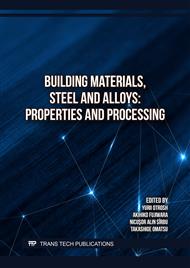p.59
p.65
p.71
p.79
p.91
p.101
p.109
p.125
p.131
Effect of Concrete Deep Penetration Sealer on Durability of Concrete
Abstract:
With the continuous development of novel concrete formulations incorporating various materials, a prevalent issue is their susceptibility to deterioration, which often results in the formation of cracks within the internal structure. This study mainly explores the impact of liquid concrete deep-penetration sealer (CDPS) on the durability of concrete. The evaluation of durability included compressive strength tests, abrasion resistance tests, permeability tests, and rapid chloride ion penetration tests. Although compressive strength and permeability are conventionally regarded as the primary metrics for assessing concrete performance in the industry, abrasion resistance is often overlooked. To address this gap, this study incorporated abrasion resistance testing to ascertain the sealer's efficacy in mitigating surface wear. This barrier mitigates the ingress of deleterious external agents, thereby enhancing the overall durability of the concrete. Furthermore, the results highlight the potential of such treatments to significantly improve critical performance parameters, particularly in terms of wear resistance and resistance to chloride ion penetration, which are essential for prolonging the lifespan of concrete structures.
Info:
Periodical:
Pages:
131-135
Citation:
Online since:
October 2025
Authors:
Keywords:
Price:
Сopyright:
© 2025 Trans Tech Publications Ltd. All Rights Reserved
Share:
Citation:


